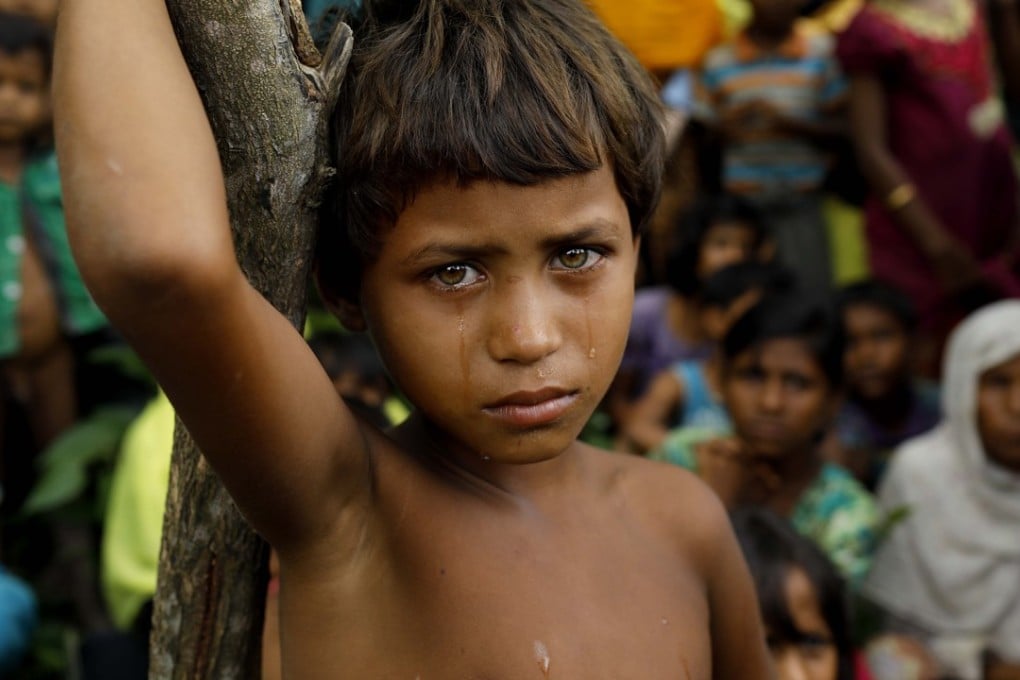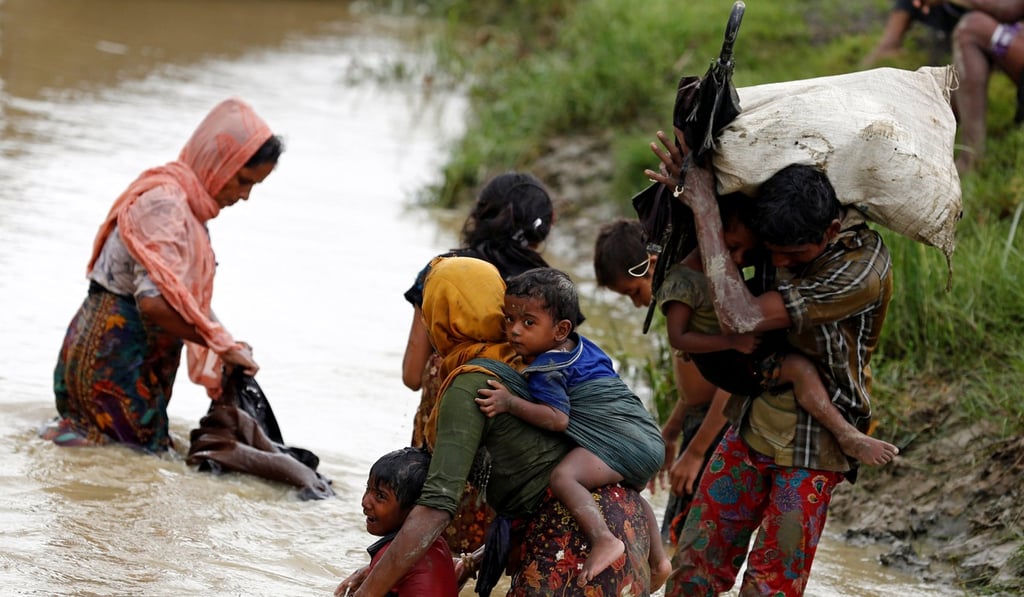Asia’s Palestine? Myanmar’s Rohingya: stateless, persecuted and a new cause for religious extremism
Anger towards Myanmar’s treatment of its Rohingya minority in Rakhine State threatens to become a lightning rod for divisions between Muslims and non-Muslims in Indonesia, Malaysia and beyond. Asean ignores it at its peril

The recent clashes in northwestern Myanmar between Muslim Rohingya insurgents and the country’s military and police, which erupted on August 25, have already sown the seeds of a regional sectarian and humanitarian crisis. The violence, part of much wider, longer-running unrest in Rakhine state, caused 400 civilian deaths according to official counts, and displaced at least 270,000 people, many of whom are now desperately short of food and water.
In response, sentiment against Buddhist-majority Myanmar is building in Muslim-majority Indonesia and Malaysia; efforts are already under way in Kuala Lumpur to have Myanmar expelled from the Association of Southeast Asian Nations (Asean).
Plight of Myanmar’s Rohingya: militant Islam’s next rallying call?
“The regional grouping needs to act urgently to prevent the Rakhine crisis from spiralling into regional tensions.”
UN Secretary General Antonio Guterres called the situation a “humanitarian catastrophe with implications for peace and security that could continue to expand beyond Myanmar’s borders”.
